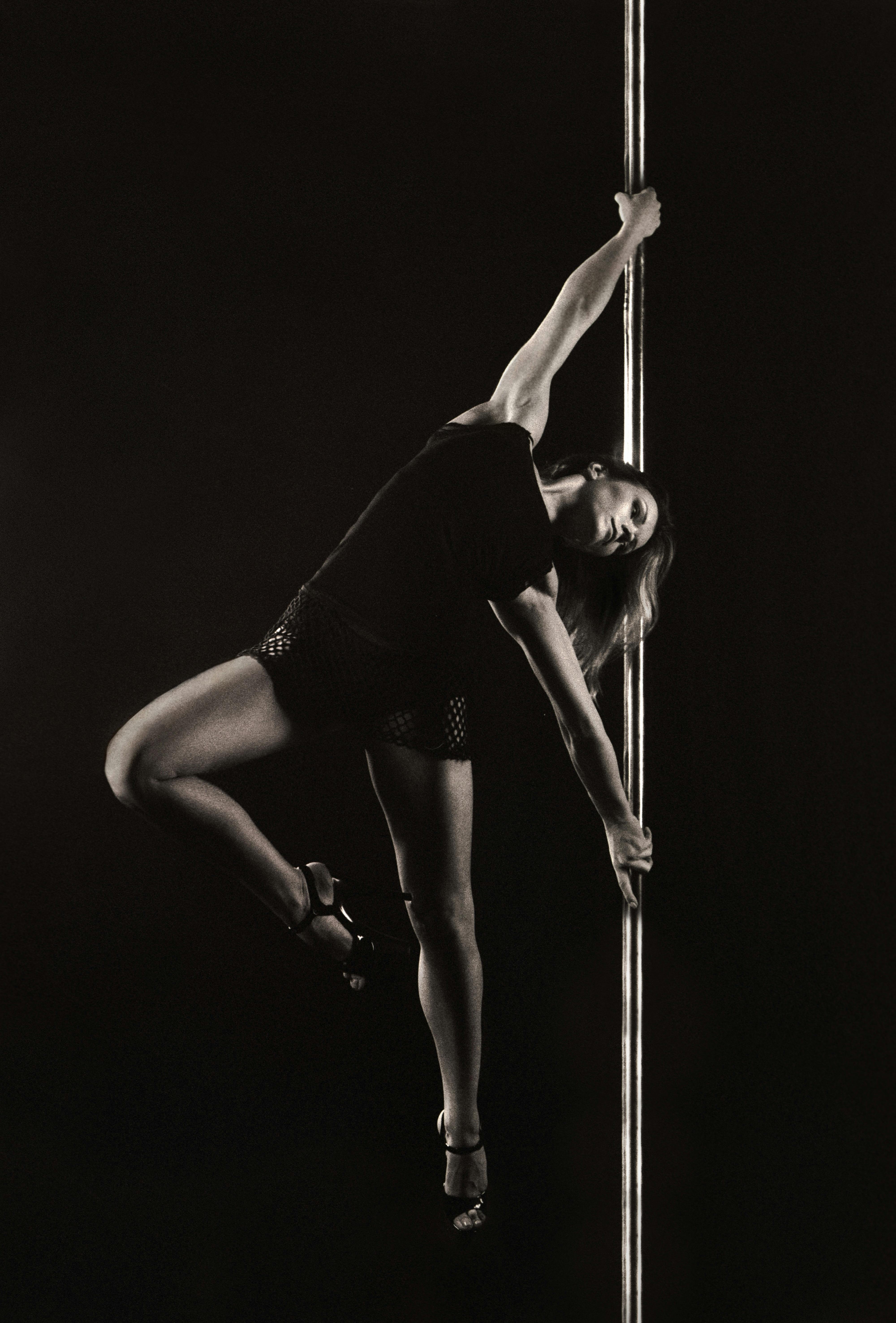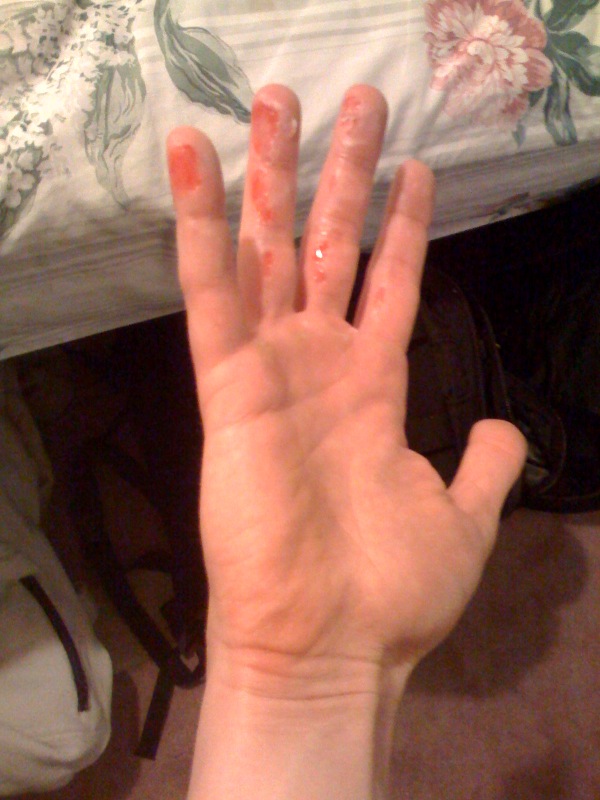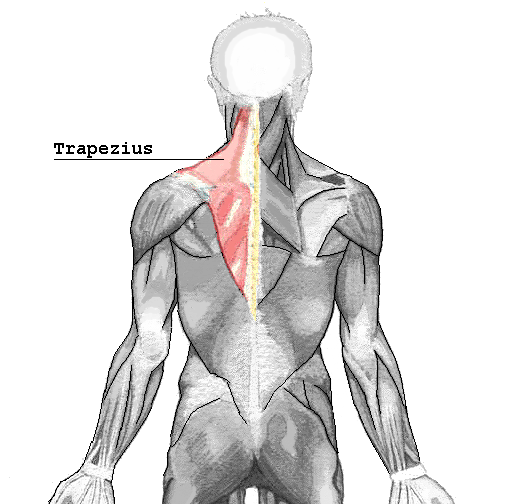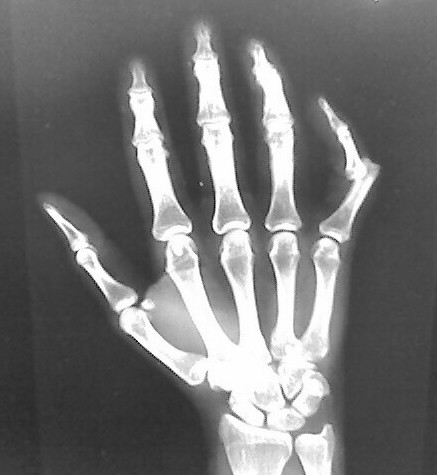The 8 Most Common Pole Fitness Injuries

and How to Avoid Them
Krystle Celis
Tuesday, November 13, 2018
The 8 Most Common Pole Fitness Injuries
Having a healthy body and mind are among my top priorities in life. To stay in good physical shape and to keep my mind sharp, I try to squeeze in at least 30-60 minutes every day for some type of exercise. With so many fun ways to exercise, I've found myself adding pole fitness to my weekly exercise regimen.
What is Pole Fitness?
As a dancer, pole fitness has become one of my favorite ways to exercise. Pole fitness is a branch of pole dancing that incorporates different types of exercises using an upright pole to work out your entire body. It's a great way to get fit as your body weight provides the necessary resistance to exercise your body’s major muscle groups such as the trapezius muscles in the back, abdominal muscles or the core, and the quads in the legs. Plus it looks awesome!
What are the Benefits of Pole Fitness?
Due to the different muscle groups that are used in pole exercises, enthusiasts can enjoy various health benefits as well. Here are some of the benefits that you can achieve through pole fitness:
- Toned muscles
- Stronger legs
- Stronger upper body
- Stronger abdominals/core
- Fat burn and weight loss
- Flexibility, balance, and coordination
- Mental and muscular endurance
- Increased self-confidence
However, keep in mind that pole fitness can also open up serious risks to injury if proper precautions are not taken or if a move is done incorrectly. In this article, I would like to share with you the 8 most common pole fitness injuries that I have personally experienced, how to address them, and what you can do to prevent them.
8 Common Pole Fitness Injuries
(1) Inflamed Rotator Cuff or Rotator Cuff Tendonitis
The rotator cuff is a group of four tendons in the shoulder area. Tendons are strong fibrous tissue that connect muscle to bone. When a rotator cuff becomes overstretched or twisted, a person can suffer rotator cuff tendonitis. This is one of the most common pole fitness injuries on this list as many pole moves rely heavily on arm and shoulder strength, as well as using the shoulder to support body weight in several pole moves and exercises. If you have rotator cuff issues, try icing the affected area and allow time for the tendons to rest. Due to the nature of this type of injury, if pain persists for a few days or weeks, you could have a rotator cuff tear and may want to see your doctor or a medical professional for further diagnosis.

(2) Carpal Tunnel Syndrome
An injury that is often associated with people who spend a lot of time typing or doing computer work, Carpal Tunnel Syndrome (or CTS) is another common pole fitness injury that pole veterans and beginners suffer through. Carpal Tunnel Syndrome usually manifests itself when the median nerve is compressed. The median nerve, otherwise known as the "Laborer’s Nerve", is a long branch of nerves that spans from the wrists up to the shoulder. When the bundle of nerves are compressed, you may feel numbness, tingling sensations, and pain in the affected hands. Over time, CTS sufferers may experience reduced grip strength. Since you rely on your hands a lot in pole to climb and to keep you from falling, this is obviously something which isn't desirable for anyone who is into pole fitness.

(3) Bruising
Bruises (also called contusions) generally occur when our bodies incur some type of physical trauma, such as hard blow or cut to an area of the body. When blood vessels underneath the skin's surface burst, blood is trapped, causing the common "black and blue" marks at the site of injury. Since your entire body weight is often supported by skin and muscle tension on a pole, most pole moves can cause mild to severe bruising all over the body. Mild bruising is fairly common, and depending on the location of the bruise, they aren't very painful. Unfortunately, they aren't attractive and only time and rest can heal them. The best way to attend to bruise is to ice it. Lightly bruised areas may feel tender, but they are generally not debilitating. Heavy bruising from repeated and constant pole contact can be quite painful to deal with. Applying ice immediately to the bruised area, followed by a warm compress will help speed up healing and down time.

(4) Skin Burns
Certain pole moves involve a lot of sliding and holding of poses which depend on some level of friction between the skin and the pole to hold the dancer's body weight. This means that skin burns are fairly common in pole, but also in other sports like aerial silks and hoop. Depending on the severity, skin burns can usually be treated by an antibiotic ointment such as a Neosporin or Aloe Vera gel found at most drugstores. Pro Tip: Aloe Vera is a perennial succulent that doesn't require much upkeep. If you or your family members suffer from a lot of minor burns or cuts, it might be worth it to grow a few aloe plants at home. You can easily grow aloe plants in small quantities with very little water and light. If drugstores are closed or inaccessible, you can just cut a leaf off whenever you need a bit of healing medication. Plus, its all natural, and has other nutrients and health benefits, should you decide to add it to your diet!

(5) Upper Back Strain
As you probably already realize, pole fitness exercises utilize a lot of strength from the upper body. It’s not unusual that the muscles from this part of the body can become strained and sore with use. The muscles that are easily affected are your trapezius (traps) and latissimus dorsi (lats). Symptoms of upper back strains are easily noticed when you experience pain or reduced range of motion. A simple way to deal with strains in your upper back are to do post routine stretches immediately after your pole fitness workout.


(6) Chest Muscle Strain
Pole enthusiasts are also prone to experiencing muscular strains in the chest area. The muscle in the chest area that I’m referring to is known as the intercostal muscle. The intercostal muscle runs between the ribs, and plays a key role in moving the chest cavity when breathing. Pole fitness, being an upper body-intensive exercise can also cause strains in this area due to the number of moves that involve twisting the body. This can be among the most painful types of injury in pole fitness as this muscle group is constantly moving, even when you sleep (unless, you decide to stop breathing...). Applying a warm compress can help soothe pain and help heal the strained muscle faster as it will draw more blood flow to the affected areas.

Fun Fact: One of the most excruciating pains that I've ever experienced was when I sneezed with a strained chest muscle. The quick inhalation and exhalation from the sneeze caused a sharp pain that radiated throughout my entire body. Ouch!
(7) Hamstring Injury
Another common pole fitness injury that can occur during practice involves the lower body and your leg's hamstrings. Many pole moves require that the legs are perfectly straight without bending the knees, and usually puts the rest of your body in unusual positions that it may not be accustomed to. The "bottle rocket" is a great example of hamstring stretching. Pole moves like these can lead to over stretching if done improperly, and cause excessive leg muscle strains, cramping, and soreness. Personally, I've have experienced overstretched hamstrings many times in the past several years that I have been involved with pole fitness, and it's always an unpleasant injury to deal with. Besides the pain itself, it can keep you away from most simple activities (like walking or bending over) from a few days to a few weeks. Fortunately, hamstring injuries can be easily prevented with warming up your leg muscles with a few exercises and stretching for a few minutes before starting your pole workout routine.

(8) Shoulder and Elbow Dislocation
While not very common, due to the nature of pole fitness it's possible dislocate your shoulder, elbow, or other joints. In fact, any exercise not done with care, can be a candidate for joint dislocation injuries. Joint dislocation can be a severely debilitating injury, and when left untreated could lead to a permanent disability. Healing from such an injury can take you away from doing pole or other physical activities for months or even years. Since there isn't much you can do once you've injured yourself from a joint dislocation, I just wanted to mention this injury so that pole enthusiasts can be aware of it and take the necessary precautions to prevent injuries from happening in the first place.

Tips on Avoiding Common Injuries
We all know the old saying: “An ounce of prevention is worth a pound of cure.”
This applies to a variety of things in life most especially to life on the pole. Based on my own personal and professional experience working with athletes and dancers in the pole fitness world, here are my tips to prevent pole fitness injuries:
Always warm up and cool down
As with any exercise, it is always important to warm up and cool down. Warming up allows your body to have more increased blood flow, which readies your muscles and makes them more flexible. Cooling down helps your body recover and regulate blood flow. The body is a biological machine, and it takes time and preparation for it to operate optimally. Take a tip from the experts, and always warm up and cool down!
Know your body’s limits
This is probably one of the most underrated, but most important tips that I can give you, not only for pole fitness but for any exercise or sport. Never train when you are tired, either physically or mentally. When your body or mind is exhausted, you lose focus and put yourself at risk for injury and possibly injuring others. When you lose your focus while training on the pole, there’s a higher chance that you might slip and fall, which will be the main cause of your injury. I listen to my body, and I know when I've had enough. When I'm tired, I rest. It's that simple.
Build strength
It’s common to see pole dancers going to the gym in addition to practicing and working in the studio. Even though pole fitness is a great exercise as it is, it doesn’t hurt to have supplementary exercises to help your body build more strength in all areas of your body. Core, arm, leg, and back strength all play a role in pole routines. The stronger these muscle groups are, the better you'll be able to perform overall, but most importantly, you'll reduce the amount of injury to joints and connective tissue (tendons, ligaments, etc).
Nutrition
Nutrition is a complex and highly debatable subject, but if you’re doing any kind of physical training, you can bet that your metabolism will increase. A higher metabolism is an increased rate in which your body converts your fat and food stores into energy. This is completely natural. But before you start eating more food, a word of caution on the types of food you eat. For the sake of simplicity, a well-rounded diet high in vegetables, protein, and healthy fats will ensure that your body gets the proper nutrition it needs for proper bodily functions. In general, try to stay away from foods that are composed mostly of complex carbohydrates and sugars. More and more research material is being released that demonstrate the benefits of a diet low in carbs and sugars. In addition to keeping your blood sugar levels stable and preventing diabetes, a low sugar diet will help to reduce bad cholesterol, joint inflammation, and overall weight gain. In general, the quality of the food you eat is usually more important the amount you eat. And of course, be sure that you’re drinking enough water to keep your body hydrated to replace the fluids and electrolytes that are lost during training.
My Final Words: Exercise Caution
The tips I've shared with you are all based on the ways that I've used to avoid and manage injuries caused from pole dancing. Remember, if you injure yourself during exercise; do not self-treat, and go to a doctor to have it checked. There’s nothing worse than having an injury that will render you incapable of doing what you love for months just because of a muscle pull or tear.
That being said, avoid self-assessment. You might think you know your own body’s ins-and-outs, but when injuries occur, seeking help from a medical professional can be the difference between a temporary setback, or a permanent injury. Your doctor or medical specialist, will be able to provide you with the best assessment of the situation to ensure a quicker recovery time. Lastly, remain patient. If the doctor says to rest, just rest. Avoid the temptation to push your body to the point of injury by forcing it do work you’re injured. Healing takes time. Be patient, and be safe!